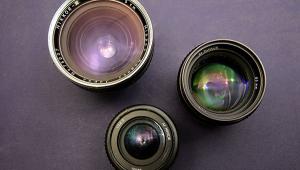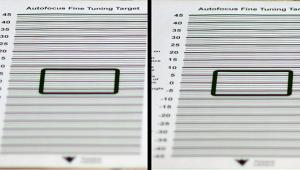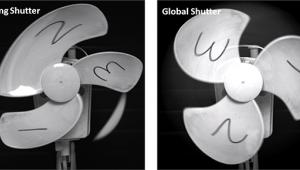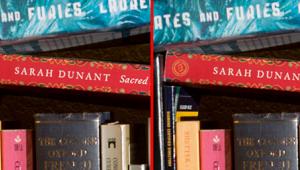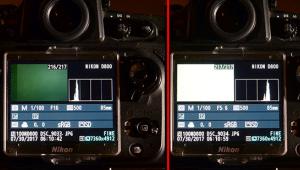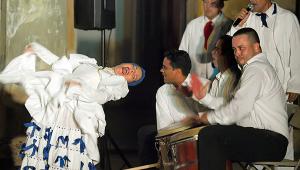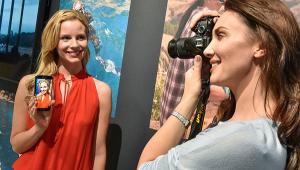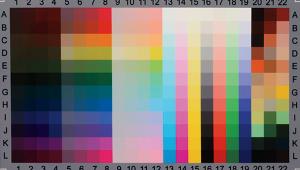I have a technical question for you involving the inverse square law regarding light. I fully understand how light falls off from a point source per the inverse square law. However, this has always bugged me. Let's say that I take a reflected light reading of a subject one mile away. (I personally drive there and take the reading and assume it doesn't change while I drive back to my camera one mile away.) I use the exposure setting obtained when I was close to the subject, but now I am one mile away. I take the photo using those settings and walla, it is the correct exposure. Question - why doesn't the light fall off via the inverse square law?
How to Make Your Photos More Dynamic: Why Dynamic Range Is More Important Than Pixel Count
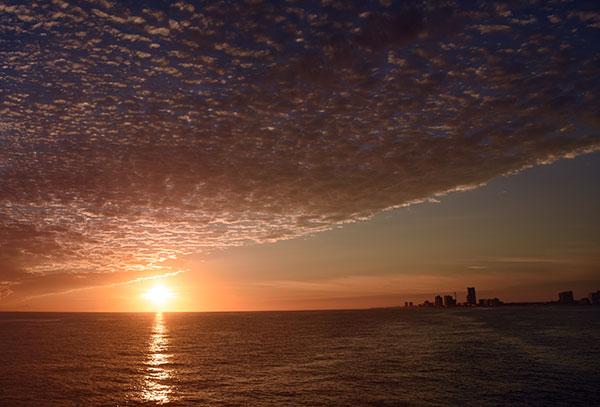
When it comes to camera bragging rights, what makes you most proud? My guess: pixel count. In a world where mobile phones can make shots good enough for billboards, nothing seems to make you feel better about yourself than to flog your camera’s megapixel horsepower.
But what about dynamic range? Ever bray about that?
For years, dynamic range was a bugaboo for digital photography—electronic imaging couldn’t capture the same brightness range as film.
Well, that problem is over and done. Today’s best digital cameras can equal or beat film in registering everything in a high-contrast scene, from inky shadows to shimmering cirrus. But as a tech-savvy photographer, you should still have an intuitive grasp of what dynamic range is. It can save your epidermis in tough shooting circumstances, and help in more benign ones.
Consider a common-enough situation where dynamic range matters. You’re on a beach, shooting into a sunset framed by glowing clouds. In the foreground, your kids frolic under an umbrella, heaping up sand in a replica of Neuschwanstein. A spot meter indicates that the correct exposure for the clouds is f/64 while your little darlings weigh in at f/2.0.
That’s 9 f/stops of difference, and simply too much to capture on either color reversal (transparency) or black-and-white emulsions. You’d have to decide on the important parts of the scene, expose for them, and accept that the rest will either burn out or black out.
But today’s DSLRs have quoted dynamic ranges of 14 stops or so, at least at low ISOs. If you crank up the sensitivity, the dynamic range of any sensor will inevitably decrease as noise mounts in the fainter parts of the image. But the good news is, you’ll seldom exceed this range in most situations. But seldom is not the same as never.
Fortunately, fast relief for most dynamic range headaches is available from your camera’s histogram display. This shows the frequency of pixel brightnesses, and when it falls to zero at both the low and high ends, you’re golden. The sensor has captured picture information from dark to light. If it pins on one side, adjust the exposure so it doesn’t.
But if it overshoots both the dim and bright ends, you’ve got to make a choice among some obvious options: expose for either highlights or shadows, relight (gotta flash?), bracket exposures and combine shots later, or simply bemoan your pictorial loss.
Capturing the full range of brightness is not just pleasant exercise, it’s insurance—like shooting Raw (which, among other benefits, will have a slightly better dynamic range than JPEG files), or diversifying your stock portfolio.
But unless you’re carrying around that camera merely as a fashion accessory, at some point you’ll actually want to look at your pix.
That used to mean paper prints or projection. Today, most photos are viewed on an electronic display. But either way, you’ve got a dynamic range problem. Paper prints can only reproduce a brightness range of about 100:1, or six to seven stops. Using a spot meter, I measured a four-stop range on my consumer-grade monitor. Projected images are generally worse.
That’s bad news, because while your camera may be gourmet, your display is definitely fast food. You’ll have to decide what portion of the brightness range the viewer is going to see, or reduce the contrast in your shot.
Now consider the opposite situation, where the histogram tapers off well shy of both limits—a scene of limited contrast. This is not only easier on the display medium, it also presents you with the opportunity to make a beneficial exposure change. You can either increase or decrease the ISO to move the histogram up against one of the edges. You’ll lose nothing in terms of picture quality, but will gain greater flexibility in aperture and/or shutter settings.
Reducing extremes of brightness to cope with limitations of the medium is a well-practiced art. When John Wayne mulled over the state of the cattle business under a bright, western sky, you can bet the crew rigged up cheesecloth diffusers to soften the sun, and arc lights to fill in the shadows under his hat.
Not to take anything away from The Duke, but on-screen he definitely had a limited dynamic ange.
Seth Shostak is an astronomer at the SETI Institute who thinks photography is one of humanity’s greatest inventions. His photos have been used in countless magazines and newspapers, and he occasionally tries to impress folks by noting that he built his first darkroom at age 11. You can find him on both Facebook and Twitter.
- Log in or register to post comments


Seth, I don't know if you're still reading but here's the answer. If you were lighting the scene yourself the brightness between camera position and subject position would be different. But with daylight, the light source is 93 million miles away. The difference of a mile or ten just doesn't matter.

